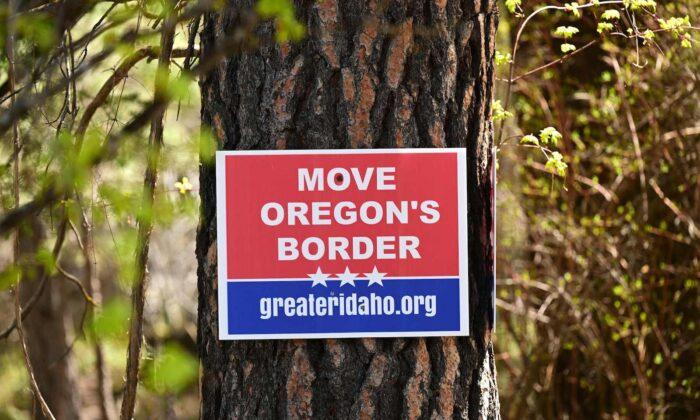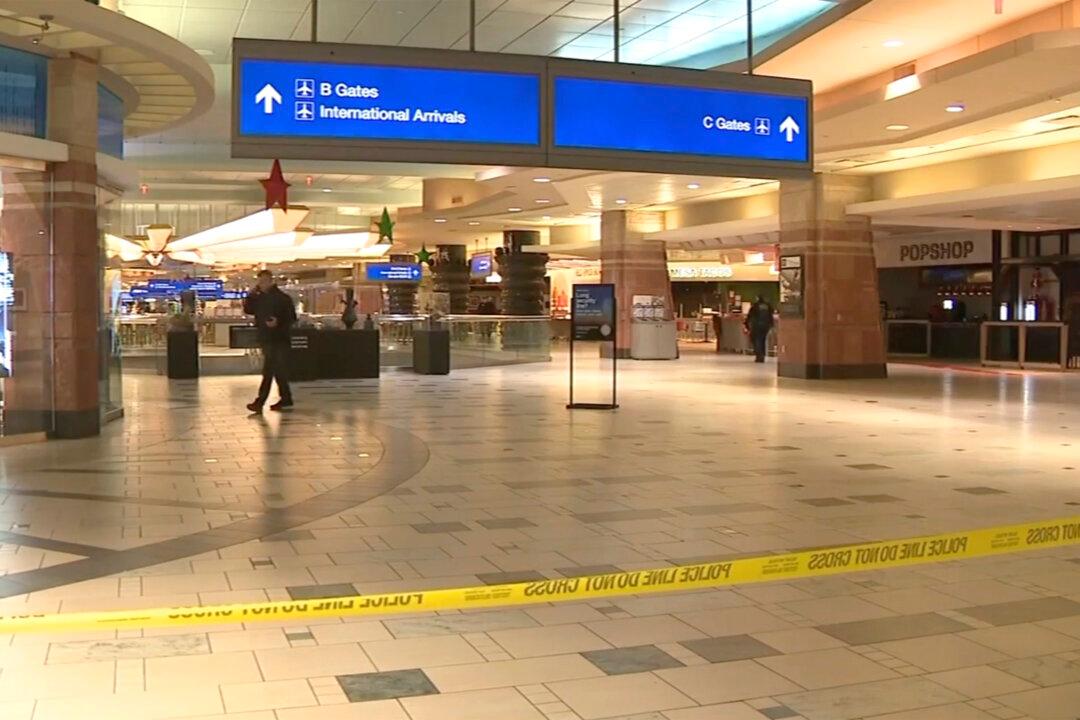MESA, Ariz.—As the owner of Rekt Drones in Mesa, Arizona, Pete Phimphavong has seen many ups and downs in the seven years that he has been selling, servicing, and test-flying both commercial and recreational drones.
“There’s been a lot of things going on” with the industry lately, Phimphavong said. “Especially with this holiday season.”
“Not only with the drone scare but with the upcoming possibility of tariffs,” he said.
Phimphavong was alluding to President-elect Donald Trump’s threat of 100-percent import tariffs on any country that wants to replace the U.S. dollar—China, in particular.
He said that adding tariffs would make his products more expensive and hurt his business.
Phimphavong is still unsure of how to interpret the most recent reports of unidentified drone sightings across the nation, mainly in New York and New Jersey.
“These things that are up there for five hours—who knows what they are,” he said.
The Federal Aviation Administration (FAA) recently announced a no-fly zone over certain parts of New Jersey as a precautionary measure.
According to the statement, thousands of commercial, recreational, and law enforcement drones are in the sky on any given day, and more than a million drones are legally registered with the FAA in the United States.
As of Dec. 2, the FAA said that there were 403,358 commercial drone registrations, 387,355 recreational drone registrations, and 423,047 certified remote pilots.
After examining the technical data and tips from eyewitnesses, the federal agencies say that the sightings so far include a combination of lawful commercial drones, hobbyist drones, law enforcement drones, manned fixed-wing aircraft, helicopters, and stars that were mistaken for drones.
“We have not identified anything anomalous and do not assess the activity to date to present a national security or public safety risk over the civilian airspace in New Jersey or other states in the northeast,” the joint statement said.
A small number of drone sightings over military installations in New Jersey and other locations, including restricted air space, have also been reported.
The statement added that sightings like this over or close to Department of Defense (DOD) installations are not unusual.
“DOD takes unauthorized access over its airspace seriously and coordinates closely with federal, state, and local law enforcement authorities, as appropriate,” the agencies said.
“Local commanders are actively engaged to ensure there are appropriate detection and mitigation measures in place.”
Organizations that represent private drone operators say they’re watching the situation with caution.
“Like many others in the industry, we are closely monitoring the ongoing events and proposed legislation regarding drone sightings, and we share in the concern about the lack of clarity surrounding who is flying these things,” Jay Hanna, a founding member of the National Drone Operators Association, told The Epoch Times.
“It is troubling that so much time has passed without identifying the operators behind these drones.”
Hanna said that two clear images of alleged drones looked more like winged aircraft compared with other common drones with four propellers and an X-type shape.
Hanna said the organization is continuing to navigate the current regulatory environment.
“However, I do expect that additional legislation will be passed in the future, which may further limit the usage of drones by the public. We will continue to stay informed and adapt as necessary to ensure compliance and maintain smooth operations.”
Phimphavong said that more laws mean more legal hurdles for commercial drone operators and hobbyists.
“With the way things are going, drones are becoming more integrated in our society. It only takes a few bad apples to ruin the bunch,” he said.
Following the recent sightings, New Jersey Gov. Phil Murphy said that he now supports the Safeguarding the Homeland from the Threats Posed by Unmanned Aircraft Systems Act of 2023.

The legislation would give the Department of Homeland Security and the Department of Justice more authority to regulate unmanned aircraft, including drones. Congress hasn’t taken action on the bill yet.
The FAA currently limits commercial and hobby drones to 400 feet and a maximum speed of 100 mph.
Missouri state Rep. Dean van Schoiack, a Republican, believes that the many sightings of unmanned craft have caused a contagious psychological effect. He has received calls from constituents who say they’re seeing drones.
“I had a guy who said he saw one in the sky for four hours. Whether it was a drone or not, I don’t know,” Van Schoiack told The Epoch Times.
He said he has filed two bills to enhance safety, security, and privacy regarding drone and other unmanned aircraft operations in Missouri’s skies.
Drone flights over privately held land would require the owner’s permission.
“Right now, people have the idea they can put a drone up in the sky and fly wherever they want to and look at whatever they want to look at. That’s an invasion of property rights,” Van Schoiack said.
Van Schoiack said 15 unauthorized drones flew overhead during the Kansas City Chiefs vs. Buffalo Bills playoff game on Jan. 23, 2022, in Kansas City.
He said the results could have been serious if one of the drones had crashed into the crowd.
Van Schoiack said he filed HB210 in early December to address security concerns arising from the drone sightings.
“I wish we were getting clear answers from our government. They’re just not telling the people for one reason or another,” he said.
“If they’re civilian drones, why fly them at night? Whoever is doing it, there’s a reason for it. They’re not happening by accident. It’s a purposeful act, so what’s the purpose?”
Made In China
Companies such as Da-Jiang Innovations (DJI), which manufactures drones for both personal and professional use, would fall under this category, Van Schoiack said.On the federal level, the Countering CCP Drones Act of the National Defense Authorization Act of 2025 would have banned DJI and other Chinese drone makers from selling their products in the United States.
However, the final approved bill did not include this prohibition. Instead, the new law requires a risk assessment for drones made in China.

“DJI welcomes the scrutiny and looks forward to the opportunity to demonstrate our privacy controls and security features,” DJI said in a statement.
Since 2017, DJI said it has conducted “regular audits of its products and has rewarded external security researchers for identifying vulnerabilities through a bug bounty program.”

Market analysts project sales of consumer drones in the United States to reach more than $1.4 billion in 2029, according to statista.com.
Autel Robotics, another China-based drone manufacturer, voiced its concern about the ongoing sightings of unmanned aircraft over the Northeast.
The company believes that any concerns about Autel technology used for illegal purposes are unfounded and speculative.
“We extend our deepest sympathies to the ordinary civilians who suffer in times of conflict and fervently hope for a business environment conducive to peaceful development,” the company said.






